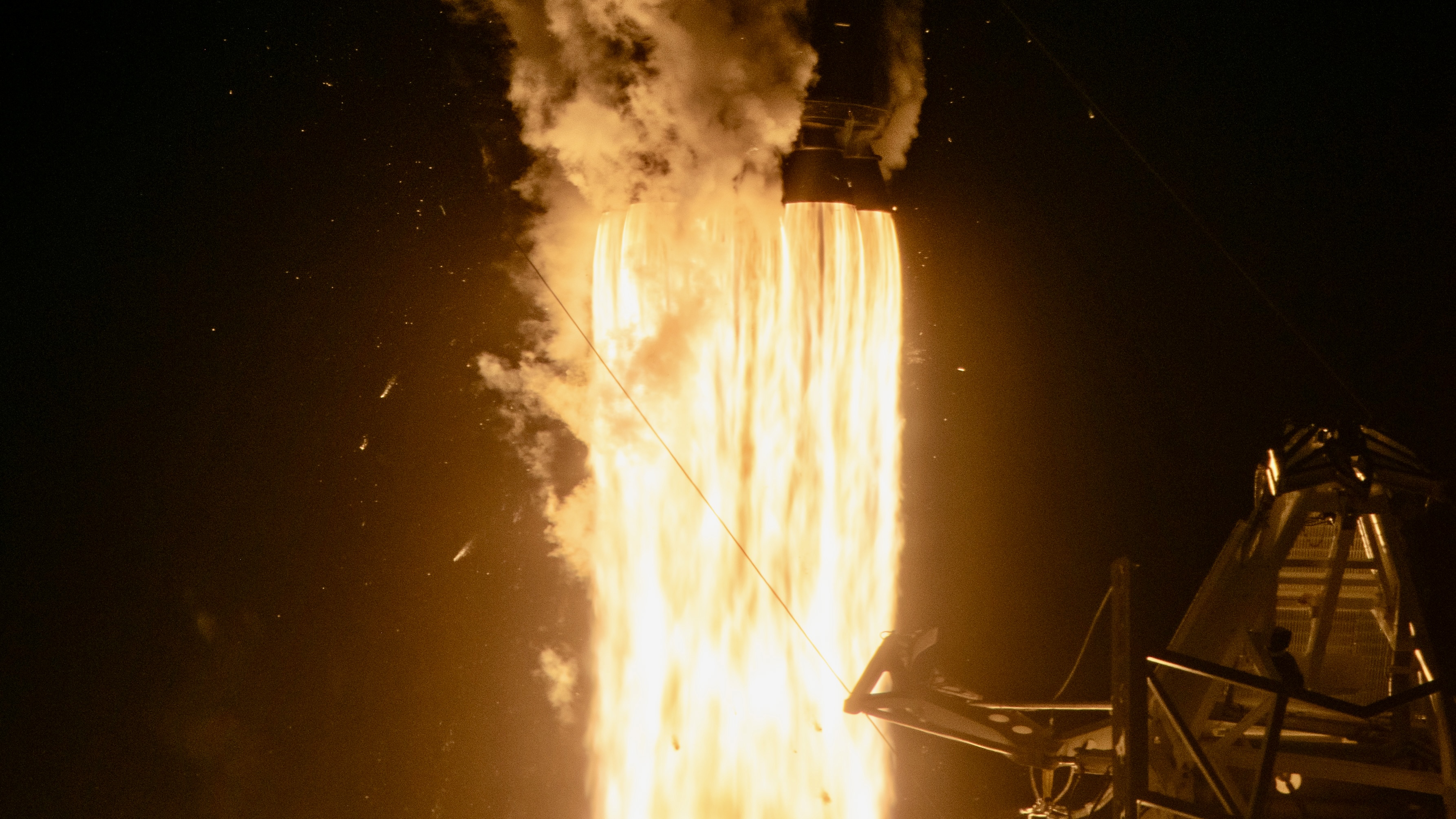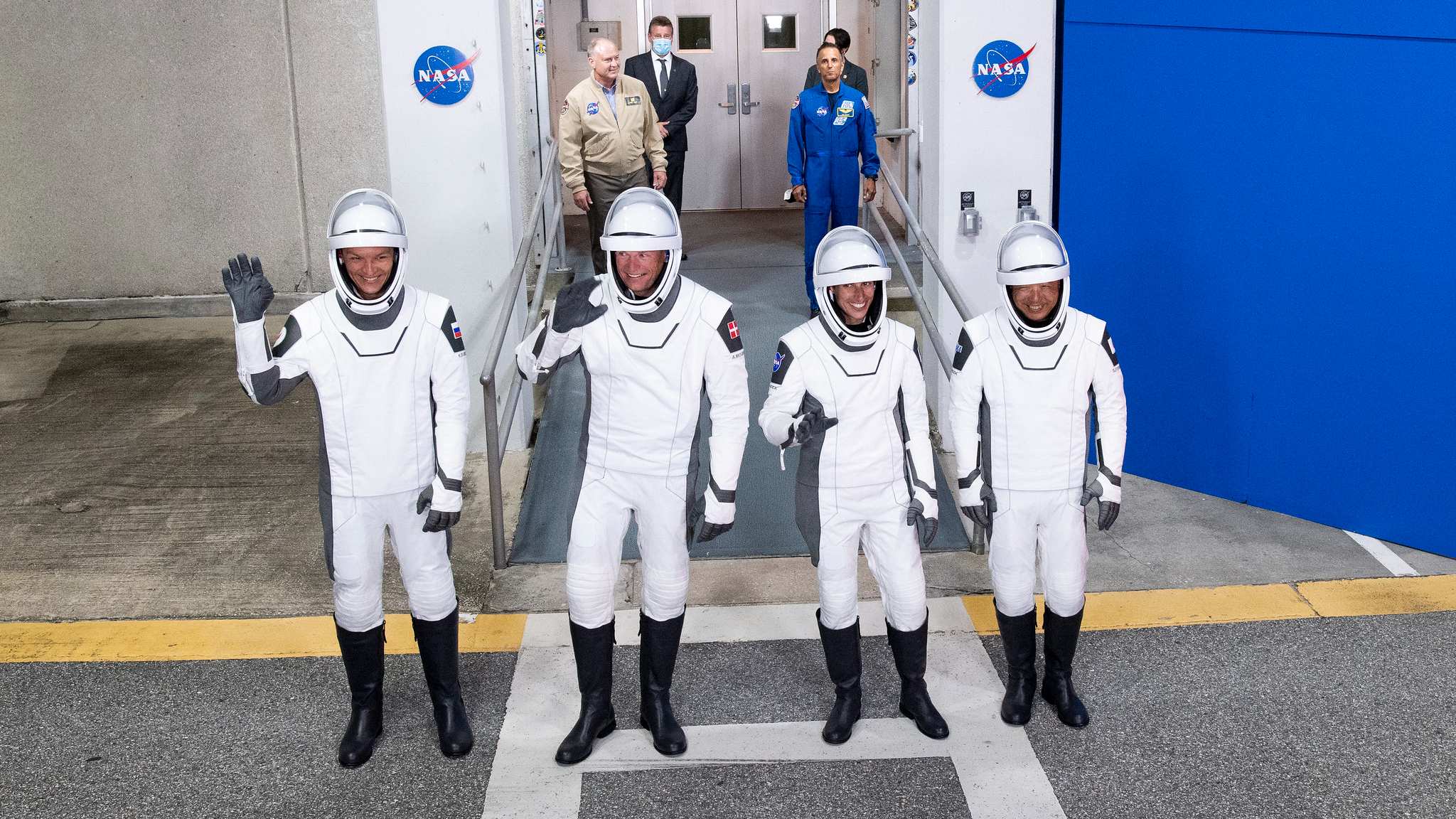SpaceX launches truly international astronaut team on Crew-7 flight to space station for NASA (video)
The Crew Dragon Endurance is scheduled to dock to the space station at 8:50 a.m. EDT (1250 GMT) on Sunday (Aug. 27).
CAPE CANAVERAL, Fla. — SpaceX launched a diverse international crew of astronauts toward the International Space Station early this morning (Aug. 26).
The four astronauts of the Crew-7 mission lifted off atop a brand-new SpaceX Falcon 9 rocket from Pad 39A here at NASA's Kennedy Space Center (KSC) at 3:27 a.m. EDT (0727 GMT).
The Crew-7 quartet will ride on the SpaceX Crew Dragon capsule Endurance to the International Space Station (ISS), a journey that will take nearly 30 hours. Once they get to the orbital lab on Sunday morning (Aug. 27), the astronauts will begin a six-month stint of science investigations and station maintenance as part of Expeditions 69 and 70.
"SpaceX, thanks for the ride. It was awesome," Crew-7 commander Jasmin Moghbeli told SpaceX launch control. "We may have four crewmembers on board from four different nations, Denmark, Japan, Russia and the United States, but we're a united team with a common mission."
Related: SpaceX Crew-7 astronaut plans to snap aurora photos on the ISS
The Falcon 9's first stage shut down and separated from the upper stage approximately 2 minutes and 40 seconds into the launch today.
The booster then performed a boost-back engine burn for a return to Earth, which it ultimately achieved: The Falcon 9's first stage touched down about 7.5 minutes after liftoff at SpaceX's Landing Zone-1 at Cape Canaveral Space Force Station, which is next door to KSC.
Breaking space news, the latest updates on rocket launches, skywatching events and more!
It was the first launch and landing for this particular booster. But Crew Dragon Endurance is a spaceflight veteran, having also flown on SpaceX's Crew-3 and Crew-5 missions to the ISS.
SpaceX did detect what may have been an extremely small leak of nitrogen tetroxide, a propellant used on Dragon, during the countdown, but found it was well within margins, Benji Reed, senior director of human spaceflight for SpaceX, told reporters after the launch. SpaceX engineers cleared the issue just about 2 minutes before liftoff.
"It was low in the count," Reed said.
The four astronauts currently riding Endurance to the ISS represent four different space agencies. Commanding Crew-7 is NASA's Moghbeli, who is making her first spaceflight. Moghbeli is now the second Iranian-American to fly to space, after Anousheh Ansari.
European Space Agency (ESA) astronaut Andreas Mogensen, from Denmark, is Crew-7's pilot; he's the first ESA astronaut to hold that title as part of a Dragon crew. Finally, Japan Aerospace Exploration Agency (JAXA) astronaut Satoshi Furukawa and Konstantin Borisov, of the Russian space agency Roscosmos, are flying as Crew-7 mission specialists. This will also be Borisov's first mission to space. (Mogensen and Furukawa are veterans.)
The crew used a small plush three-toed sloth as its mascot and zero-gravity indicator to show they reached space. The doll was picked by Mogensen's children and family, who say he is usually the slowest of the bunch when leaving the house.
Crew-7 is SpaceX's eighth astronaut mission for NASA (seven operational flights and one crewed test flight) and the company's 11th crewed mission overall. SpaceX has flown three private crewed flights, two of which visited the ISS.
The Crew-7 mission is scheduled to arrive at the ISS at 8:50 a.m. EDT (1250 GMT) on Sunday, a milestone you can watch here at Space.com. Endurance will join another Crew Dragon at the orbiting lab — Endeavour, which arrived in early March but is now getting ready to leave.
"The Crew-6 undock will be five days after this vehicle is there. That's enough time for a good handover between the two crews and such that the Crew-7 guys are ready to rock and roll," Joel Montalbano, manager of NASA's ISS Program, said on Monday (Aug. 21) during a press conference announcing the results of the Crew-7 flight readiness review.
He echoed NASA's Space Operations Mission Directorate chief Ken Bowersox, who said during the same call, "The space station is as busy as ever, as we approach our 23rd year of continuous human presence with our international partners."
This is the most international crew to fly with SpaceX to date.
"The timing worked out for this one," Montalbano said during Monday's call. NASA "shares the cost of operating the International Space Station across the partnership. So, as people fly ... each partner gains crew time on orbit, and that's based on their contribution. With [NASA's] integrated crew agreement that we have with Roscosmos, it was time for these other folks to fly."
Crew-7 was scheduled to launch early Friday morning (Aug. 25), but SpaceX and NASA delayed the liftoff by a day to conduct more analyses. Teams wanted more team to study one of the components of Crew Dragon's environmental control and life support system (ECLSS), NASA officials explained in a blog post on Friday.

Josh Dinner is the Staff Writer for Spaceflight at Space.com. He is a writer and photographer with a passion for science and space exploration, and has been working the space beat since 2016. Josh has covered the evolution of NASA's commercial spaceflight partnerships and crewed missions from the Space Coast, as well as NASA science missions and more. He also enjoys building 1:144-scale model rockets and human-flown spacecraft. Find some of Josh's launch photography on Instagram and his website, and follow him on X, where he mostly posts in haiku.



